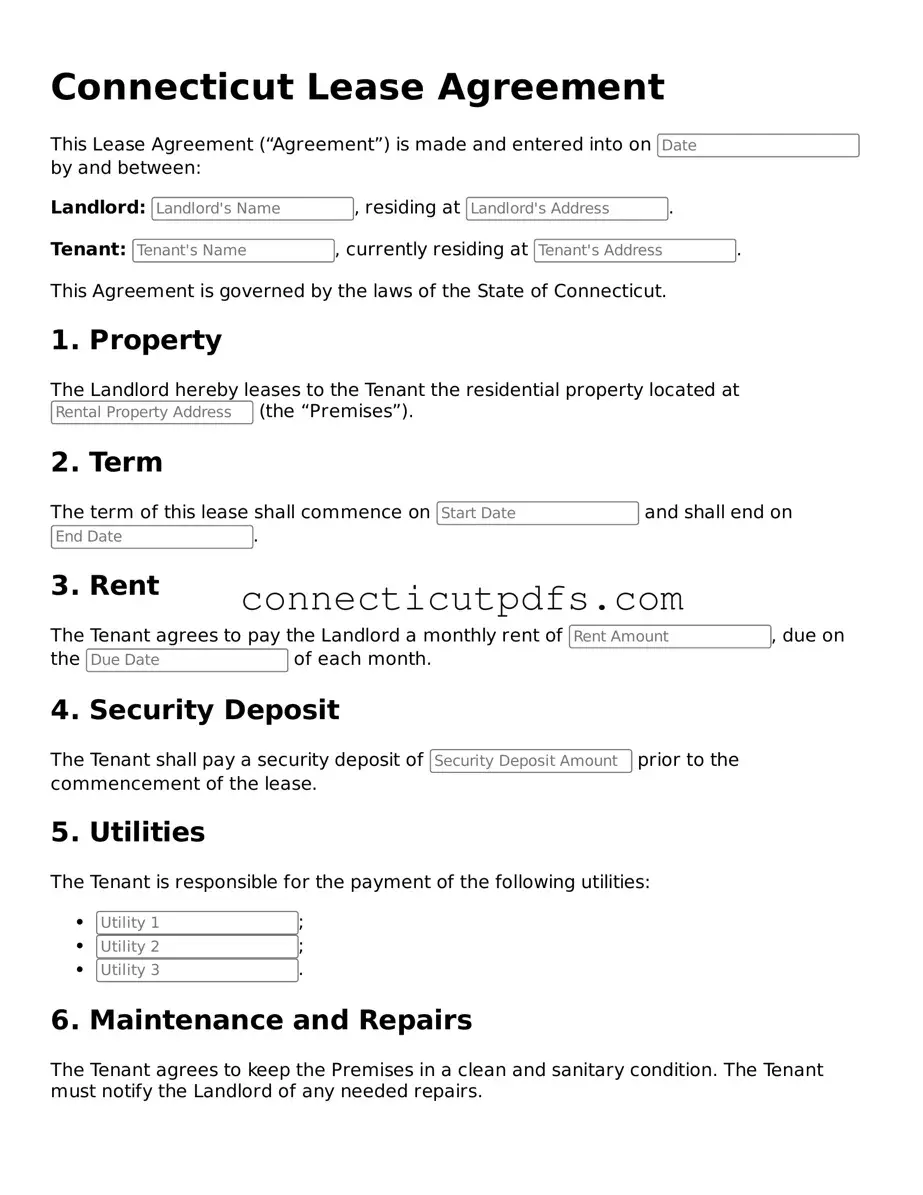Fillable Connecticut Lease Agreement Document
A Connecticut Lease Agreement is a legally binding document that outlines the terms and conditions between a landlord and tenant for renting a residential property in Connecticut. This form serves to protect the rights of both parties, ensuring clarity and mutual understanding regarding rental payments, property maintenance, and other important aspects of the rental relationship. To get started on your lease, fill out the form by clicking the button below.
Prepare Lease Agreement Here
